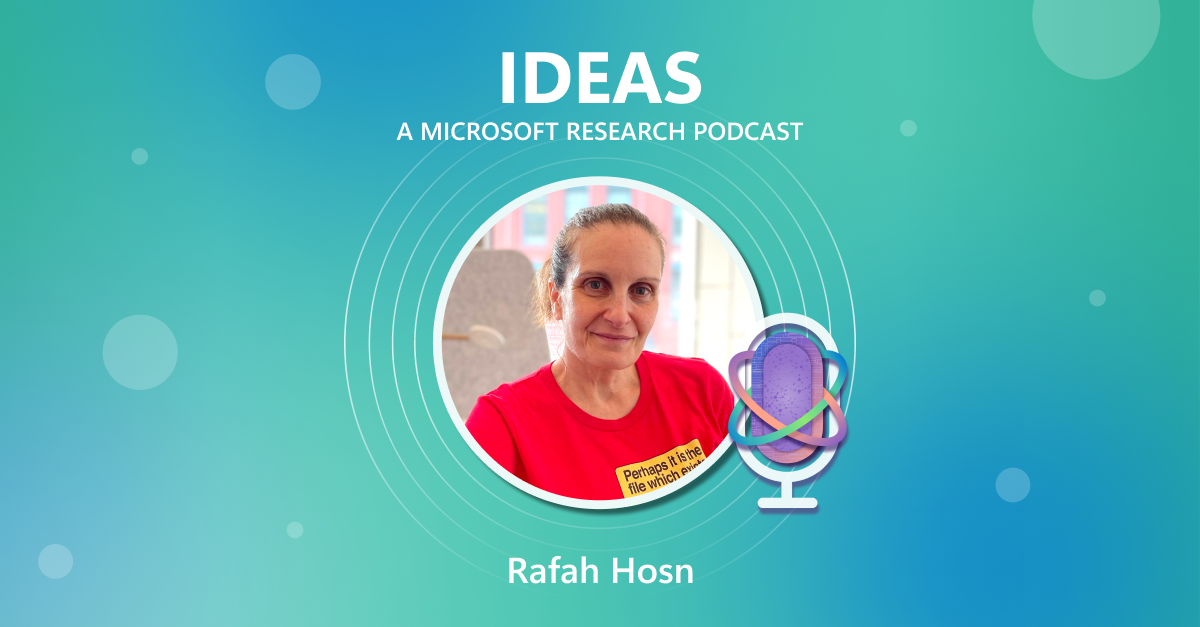Posted by
Ideas: Exploring AI frontiers with Rafah Hosn
Energized by disruption, partner group product manager Rafah Hosn is helping to drive scientific advancement in AI for Microsoft. She talks about the mindset needed to work at the frontiers of AI and how the research-to-product pipeline is changing in the GenAI era.
Such an evolution doesn’t come along too often in the software industry, and developers have responded in a big way. In its first two months, the Windows Store, which came online at the same time Windows 8 was offered for general availability, enticed visitors to download more than 100 million apps. The Windows Phone Store has surpassed 1 billion downloads. And computing usage of Windows Azure has doubled.
This new direction for developing and delivering great ideas will gain even more momentum at San Francisco’s Moscone Center from June 26 to 28 when Microsoft hosts Build 2013, a chance for software engineers to witness presentations from the developers who produce the company’s products and services.
During the event, Microsoft will share updates with attendees about what’s next for products such as Windows, Windows Server, Windows Azure, and Visual Studio. The event also will include a couple of keynote presentations and a three-day hackathon, with judging of the latter to be held during the evening on June 27.
It comes as little surprise, of course, that Microsoft Research will be playing a key role during Build 2013. After all, Microsoft Research offers a rich set of tools for developers, and more are on the way, judging from the offerings in store for those who attend the conference.
Microsoft Research will be represented in the Build schedule with three sessions:
MSR and Visual Studio: Image Watch, Smart Programming Assistant
Image Watch, to be demonstrated by Redmond-based Wolf Kienzle during Build, is a new Visual Studio 2012 plug-in for debugging C++ image-processing applications, such as photo editors or augmented-reality apps. The plug-in introduces a new watch window that displays in-memory bitmaps during debugging, which means you no longer have to litter your code with “save this image to a file” statements when tracking down bugs.
The Smart Programming Assistant (SPA), to be explained by Francesco Logozzo from Redmond, analyzes and suggests repairs to your program while you are typing it. SPA tries to prove your program error-free with respect to a Code Contracts specification, and if SPA finds errors in your program, it suggests a verified code repair.
Designing for Ubiquitous Computing
Bill Buxton, a Toronto-based principal researcher, offers a discussion similar to the one he delivered in March during TechFest, Microsoft Research’s annual technology showcase. The talk addresses digital-based appliances and services that are appearing these days in different forms and places and that are providing ever more diverse services. Improved attention to design has meant that complexity of the use of each has dropped dramatically, yet the collective complexity experienced across the spectrum of devices and scenarios is increasing significantly.
Developing Neural Networks Using Visual Studio
James McCaffrey of the Redmond lab will lead the discussion of this session, which addresses the neural network, an artificial-intelligence technique based on biological synapses and neurons. Neural networks can be used to solve difficult or impossible problems, such as predicting which sports team will win a contest such as the Super Bowl.
Microsoft Research’s contributions to Build 2013 might be bold, but that should not surprise the attentive. This, after all, is the organization that has given developers such tools as the F# functional programming language, the TouchDevelop app that enables you to program your phone by using your phone, Project Hawaii cloud services for mobile devices, and web-based programming enabled by Pex for Fun.


